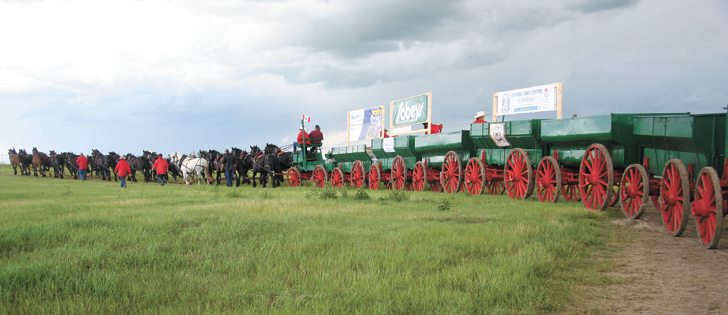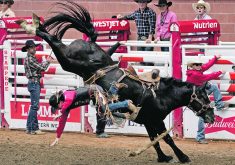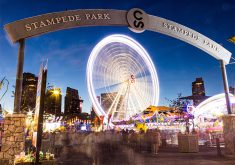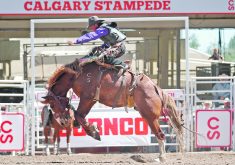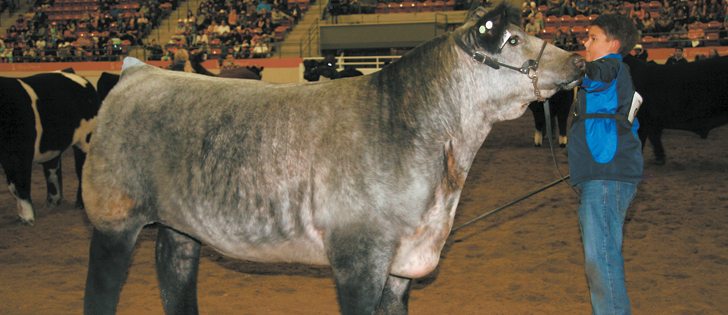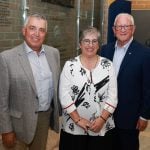STRATHMORE, Alta. — Neil Dimmock carries equine savvy in his genes.
The Alberta Percheron breeder comes from a long line of horse lovers and teamsters that trace back to Saskatchewan homesteaders from England. The family settled near Tompkins and set up a horse ranch in the 1860s.
“Some of the bloodlines we have here are from those original horses,” he said.
To honour that family tree and love of history, Dimmock drove a team of Percherons in the Calgary Stampede to commemorate a 36-horse hitch from 1925.
Read Also
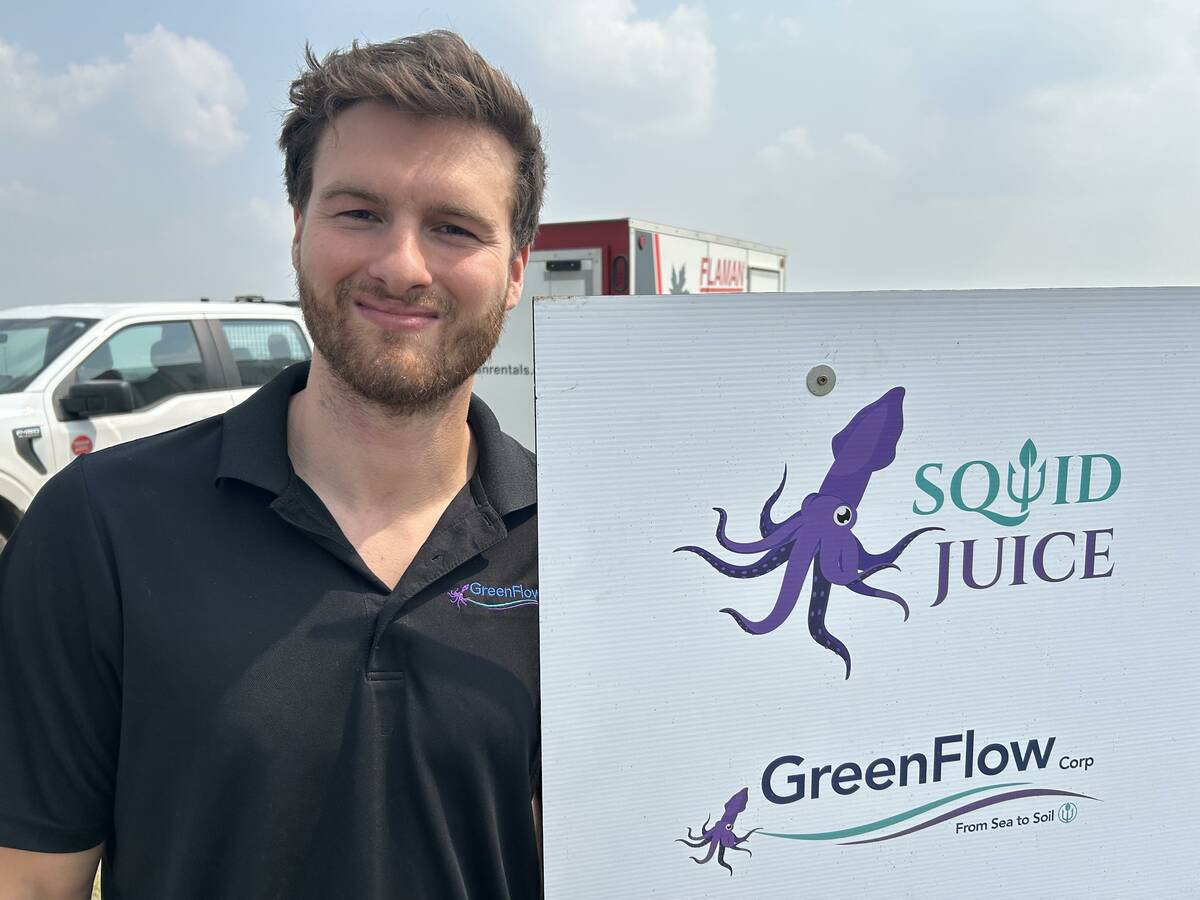
Squid fertilizer draws interest at Ag In Motion
GreenFlow says its Squid Juice might elicit a smile or chuckle, but insists the fertilizer and its benefits are for real.
In that year, teamster Slim Moorehouse drove a 36 horse hitch from Gleichen, Alta., 100 kilometres east of Calgary, to the Stampede parade pulling 10 McCormick wagons loaded with 1,400 bushels of wheat.
Dimmock proposed the re-creation to the Stampede board last September and hoped to break a world record with a Percheron team of at least 50, but a partner who was lending him extra horses suddenly died a week before the Stampede.
More WP Calgary Stampede coverage here
There was no time to find more horses and train them, so the final haul used 20 horses.
Dimmock, who owns Hitchmasters Percherons east of Edmonton, set a record in 2003 for the world’s largest hitch of Percheron horses. There were 46 breed specific horses in that hitch.
Preparation for the Stampede took three months. The horses had to be trained so each one knew its job.
“The most important are the lead horses,” Dimmock said.
“They have to be well schooled with a little bit of energy. Wheel horses have to be steady as a rock.”
He and his father had earlier restored six of the eight grain wagons used for the event. Each wagon weighed more than a tonne.
Dimmock has always favoured black Percherons in his breeding program and admires the ancient breed for its intelligence.
“They are great thinkers. A lot of horses will let you steer like a car, but a Percheron will let you know what he is thinking,” he said.
“You can’t force an animal that weighs a ton to do anything, so if he isn’t happy about it, he lets you know right away.”
Dimmock, his wife, Kim, and their two teenaged children have about 50 Percherons and use the gentle giants for farm work on 80 acres of land.
They also enter parades, offer hay rides, participate in weddings and charity events and do historic enactments with horses.
The horses give observers a glimpse into the past, but he fears the art of this type of draft horsemanship could be lost.
“Nobody knows how to do this, so every time I do this, I have to teach new people how to do it,” he said. “If I don’t teach this, it is going to be lost.”




